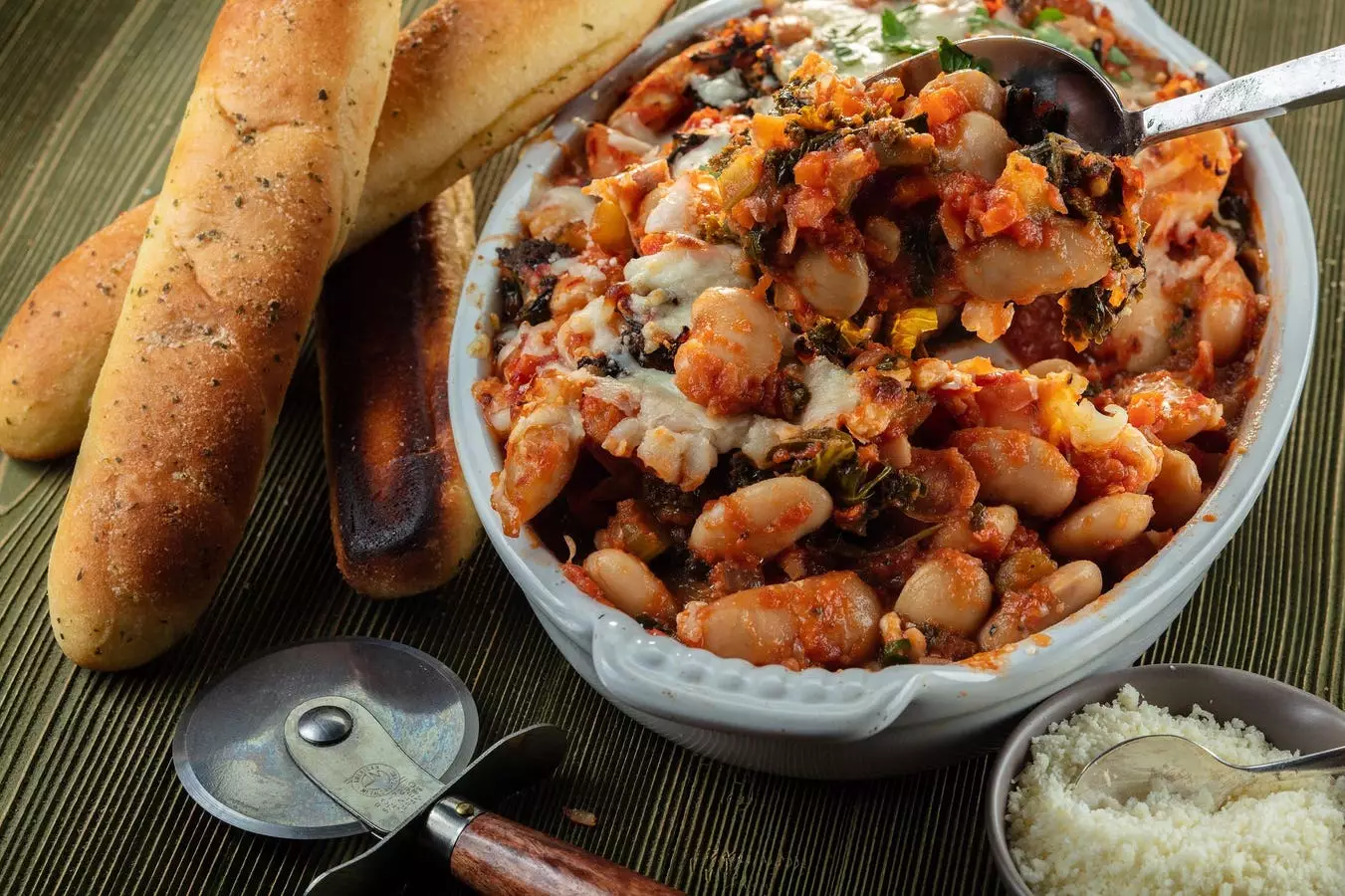In the realm of comfort food, certain dishes carry a special significance, serving not only as sustenance but also as a nostalgic embrace. Deb Perelman’s pizza beans, featured in her acclaimed cookbook *Smitten Kitchen Every Day*, epitomize this sentiment. Combining the heartiness of Greek-style baked beans with the delightful indulgence of baked ziti, this dish has garnered a dedicated following among home cooks for its comforting flavors and simple preparation. However, pizza beans recently transcended their culinary roots, inadvertently becoming a part of a sensational true crime narrative, capturing the public’s imagination and spotlighting the intersection between everyday life and extraordinary circumstances.
The foray of pizza beans into the mainstream media occurred when TMZ revealed that the dish was part of the prison menu at SCI Huntingdon, where suspect Luigi Mangione awaits trial for the alleged murder of UnitedHealthcare CEO Brian Thompson. The unusual juxtaposition of a humble casserole being associated with a high-profile murder case has shed light on how a seemingly innocuous recipe can become entangled in complex cultural discourses, sparking interest far beyond the kitchen.
The social media landscape swiftly reacted to the news of pizza beans’ connection to Mangione, leading to a deluge of memes and discussions. What would ordinarily remain a cozy recipe on many dinner tables transformed into a viral topic, revealing our collective fascination with true crime narratives. The allure of this occurrence lies not merely in the fact that a casserole is mentioned in the context of a murder trial; it speaks to a broader human curiosity about the intricacies of life, crime, and the relationships that form within this tapestry. Social media served as an amplifier for content creation, blending humor and pathos in a way that resonates with our cultural appetite for storytelling.
As people dissected the implications of Mangione’s alleged crime, they also engaged with the mundane details of his life as an inmate, providing an unexpected moment of levity amid serious conversations. The incorporation of a recipe for pizza beans brought levity to an otherwise weighted narrative. The humanization of Mangione through this quirky detail highlights our psychological desire to connect with the broader emotional narratives that encapsulate these sensational tales. In many ways, it is this desire that lends gravity to the flippant discussion of a prison menu item.
The shift of pizza beans from kitchen staple to viral phenomenon exemplifies a fascinating cultural tendency to find meaning in seemingly trivial details. As the public absorbs the unfolding story of Mangione and his alleged crime, pizza beans symbolize the curious juxtaposition of the ordinary against the backdrop of extraordinary events. They serve as a reminder of how humanity often seeks out connections through stories that appear simple or mundane, allowing us to better understand complex social narratives.
The public’s surge of interest can be likened to the way we engage with folklore; we imbue stories with personal significance and collective empathy, drawing us into the lives of others despite the distance. Pizza beans, cast as the culinary avatar of a controversial figure, represent both comfort and complexity. They forge a bridge, inviting people to explore the psychological motivations behind Mangione’s actions while indulging in a sense of understanding for the human experience.
As social media proliferates, these dialogues around less conventional details in sensational stories morph into viral sensations, influencing the cultural landscape. Pizza beans have become part of a broader discourse around true crime, food culture, and humanity’s multifaceted curiosity about the lives of those involved in tragic narratives. This phenomenon not only allows for humor but also encourages introspection about our engagement with the media, the narratives we construct, and the deeper meanings we glean from typical moments.
In finale, the trajectory of pizza beans from a beloved recipe to a viral cultural touchpoint in a true crime saga emphasizes the intricate web of connections between food, society, and storytelling. As the case against Mangione escalates, our fixation on pizza beans reveals much about our intrinsic need to bridge the chasm between the ordinary and the extraordinary. Even in the most peculiar contexts, pizza beans remind us of our shared human experience, highlighting the complexity of life through the lens of a dish that brings comfort. As we continue to explore the bizarre intersections of food and crime, we unveil a collective narrative marked by curiosity, reflection, and, ultimately, a deeper understanding of ourselves within the stories that shape our world.


Leave a Reply